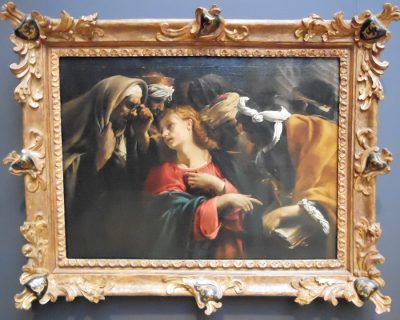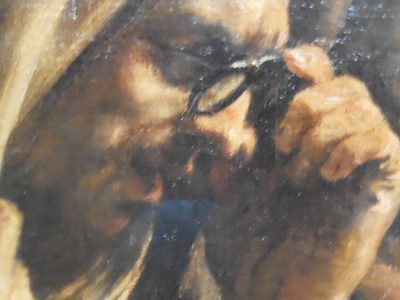Marvin Bolt, the Museum’s curator of science and technology, traveled to Europe last fall to research some of the world’s oldest telescopes. Read along to hear about his adventures and discoveries.
Not surprisingly, I knew a few people on the flight out of Corning: fellow curator Tina Oldnow and CMoG director Karol Wight were on their way to London.
After uneventful flights to Detroit and then to Amsterdam, I enjoyed several hours at the Rijksmuseum, where I learned a few interesting things about the uses of glass and rock crystal in the 16th and 17th centuries. I also saw examples of a piece of 17th-century furniture (a kunstschrank) that served as a kind of miniature museum.
I’m especially interested in them because two of the oldest telescopes in the world (in Berlin and Dresden) are connected with a kunstschrank made by Philip Hainhofer, who made this one at the Rijksmuseum as well. Unfortunately, the contents of this one were stolen in 1631.
When visiting art museums, I’m always on the lookout for scientific artifacts and representations of them. The Rijksmuseum didn’t disappoint. One of my favorite examples is this painting of Christ among the Doctors by Orazio Borgianni. Here, Jesus instructs physicians, including one equipped with spectacles that wouldn’t be invented until nearly 1,300 years later.
- Christ among the doctors by Orazio Borgianni at the Rijksmuseum.
- Detail of Christ among the doctors by Orazio Borgianni.
Right down the street is one of my favorite museums, the Van Gogh Museum. Vincent’s advice still holds true a century and a half later.




